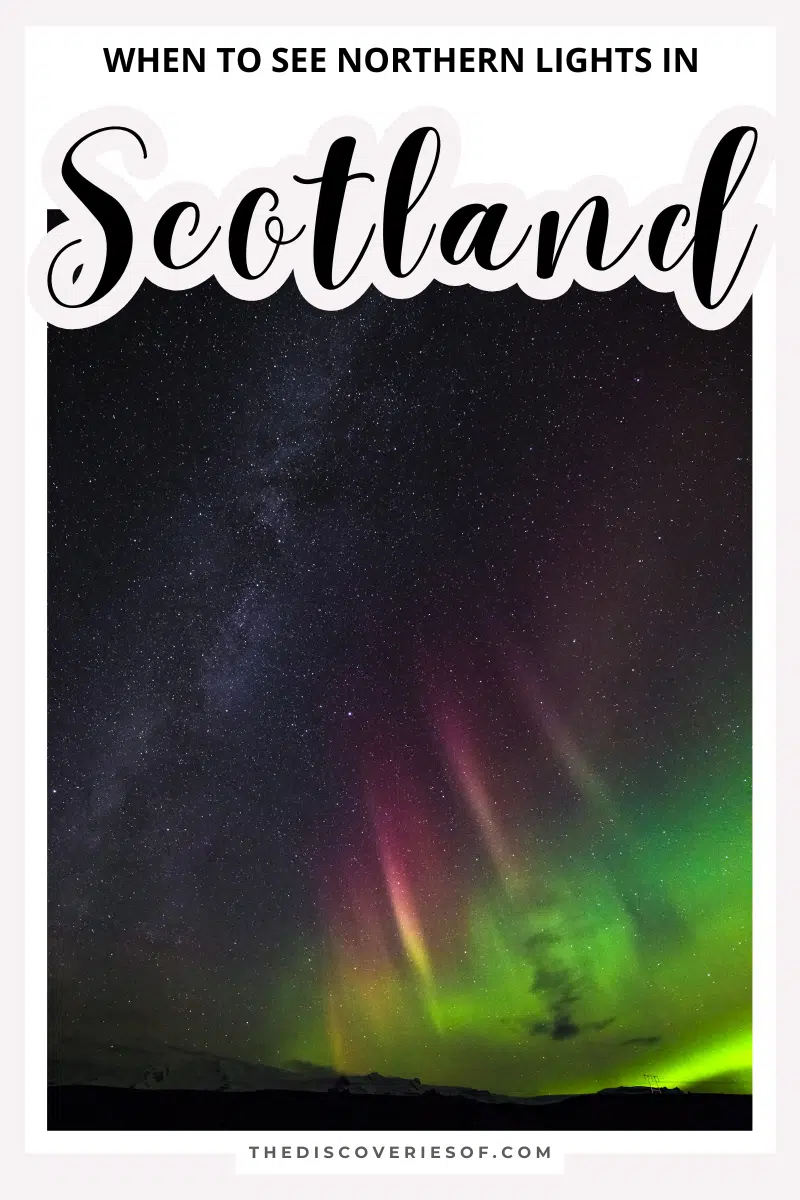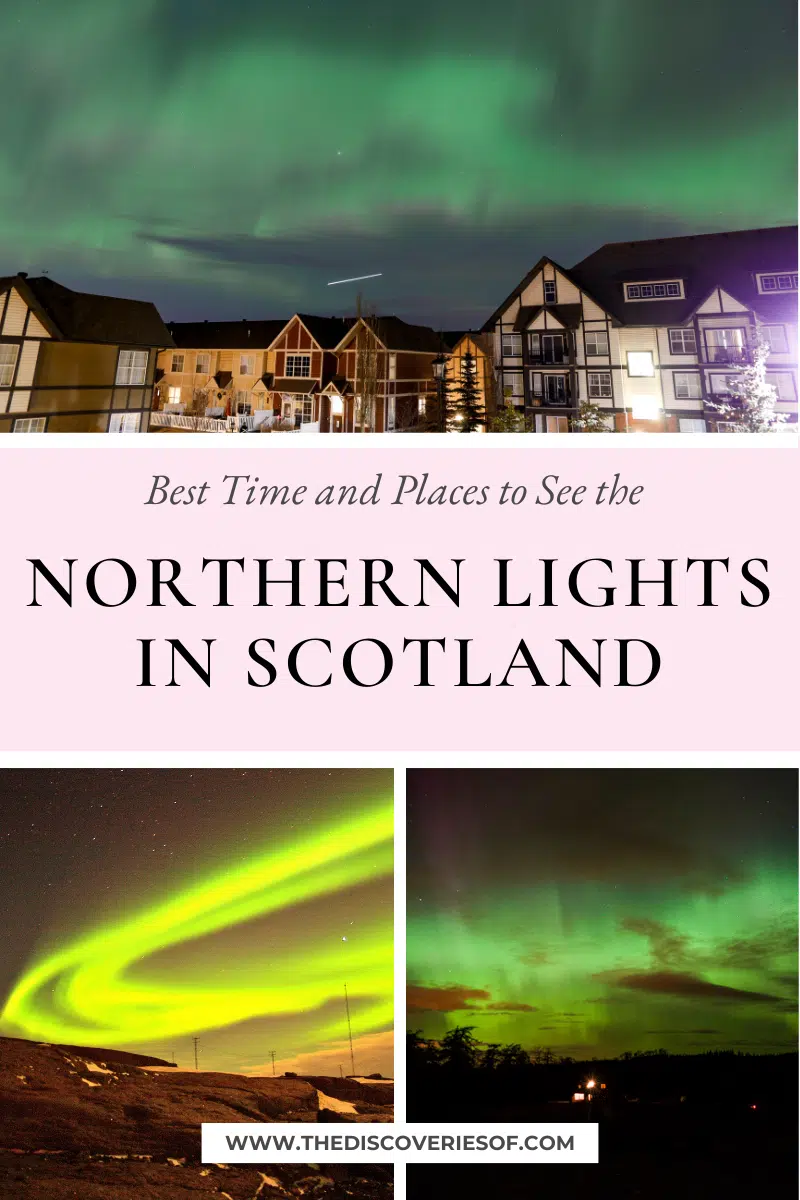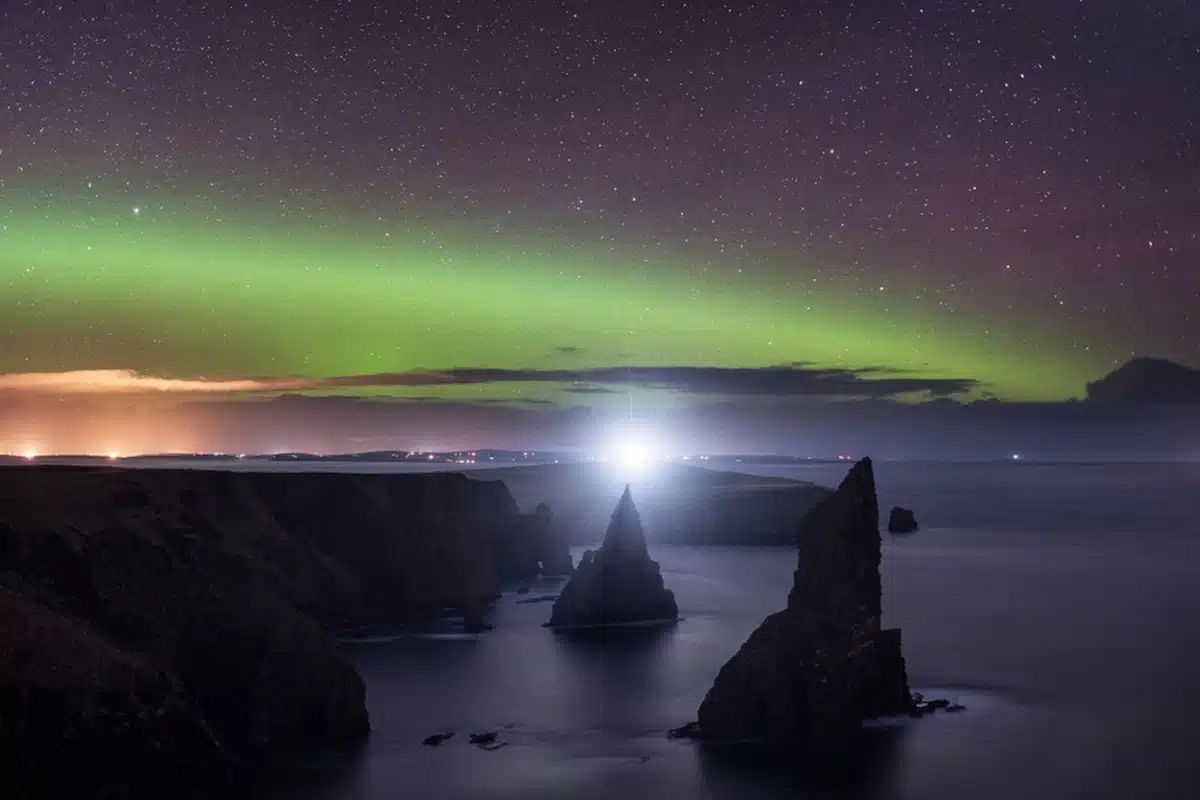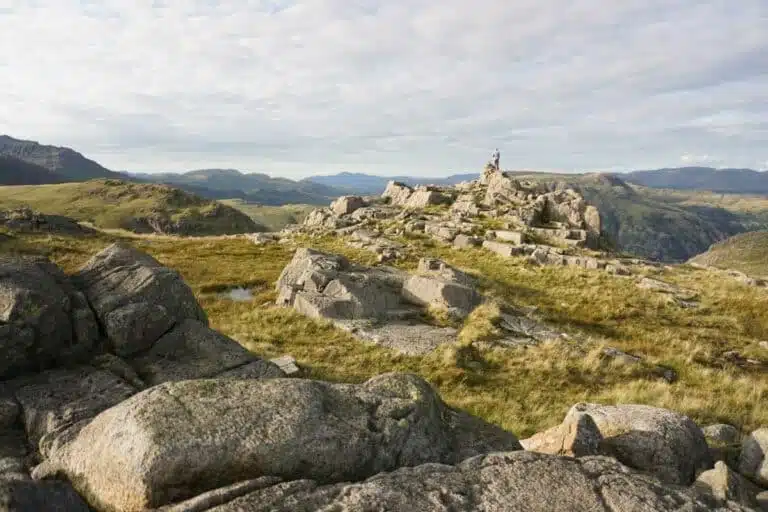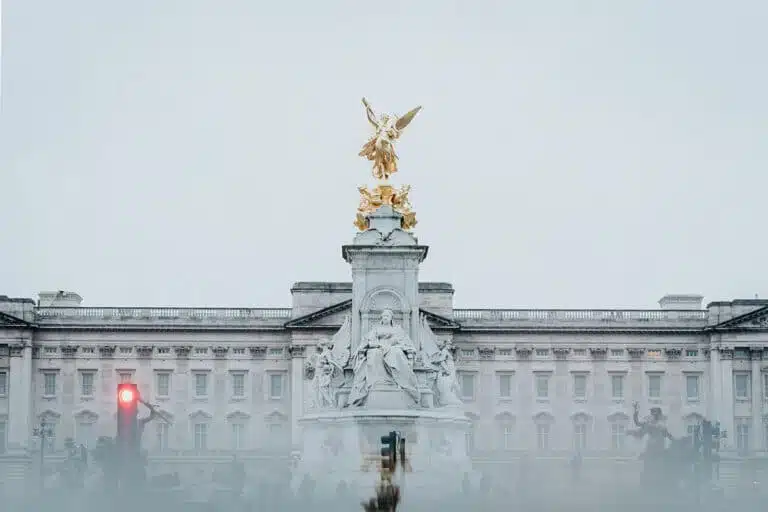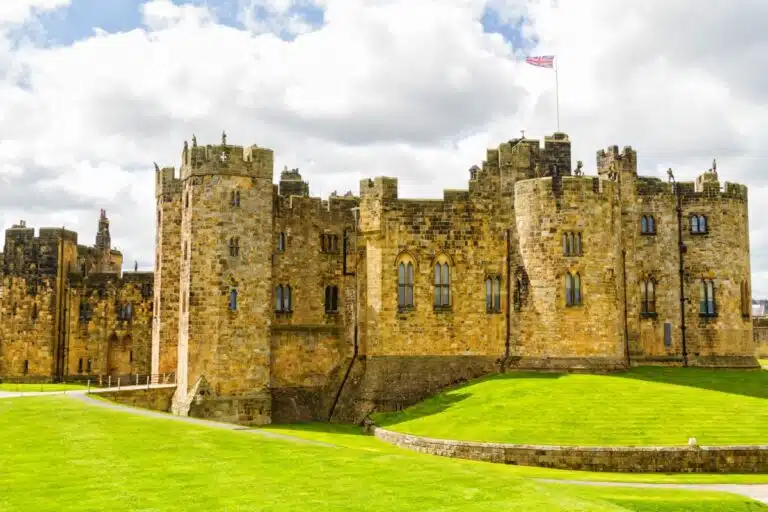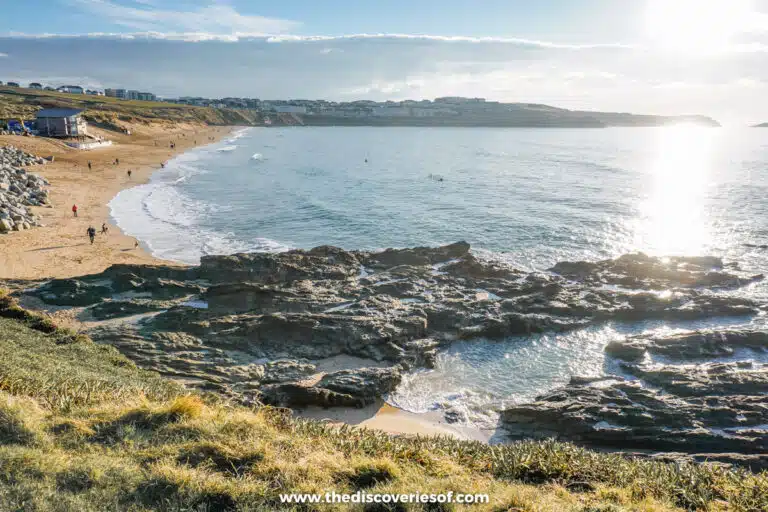Hunting out the Northern Lights in Scotland? Read on to discover the top spots for spotting the Aurora Borealis.
I love Scotland – it’s a seriously underrated destination. And, as somewhat of an Aurora enthusiast, I love that you can (sometimes) see the Northern Lights from the very northern fringes of the country.
One thing I’ve learned on my many trips to the Highlands is that, if you travel to Scotland in autumn or winter, you might just be fortunate enough to see the Northern Lights.
Though, for full disclosure, I’ll tell you that it’s not as easy as spotting the Northern Lights in Norway or Iceland. But I love a challenge, and I’m here to show you that it certainly can be done. So wrap up warm and cross those fingers.
Read on to discover my top tips for spotting the Aurora Borealis in Scotland.
PS: Want to delve into how to plan a Northern Lights Trip? Watch this video!
Are the Northern Lights Visible in Scotland?
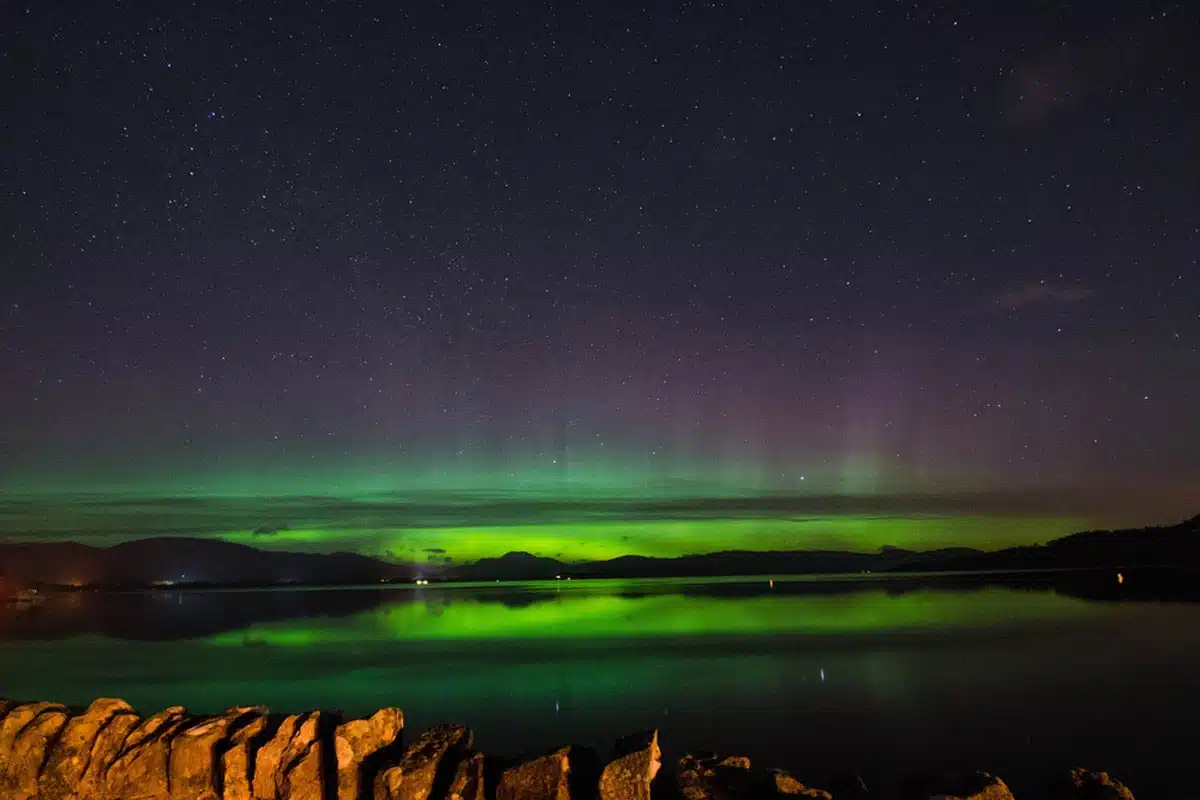
Short answer: Yes.
Long answer: It’s tricky and timing is everything, but it’s very possible to spot the Aurora Borealis in Scotland if you’re in the right place at the right time between late September and late March.
The country is far enough north to provide an excellent chance to see the Aurora Borealis and has several places where you can see them. So stick around as I share my top tips, my fellow Northern Lights hunter.
Where To See the Northern Lights in Scotland
Alright, I’ve teased you enough. Let’s get into the top places to spot the stunning colours dancing across the sky.
Shetland Islands
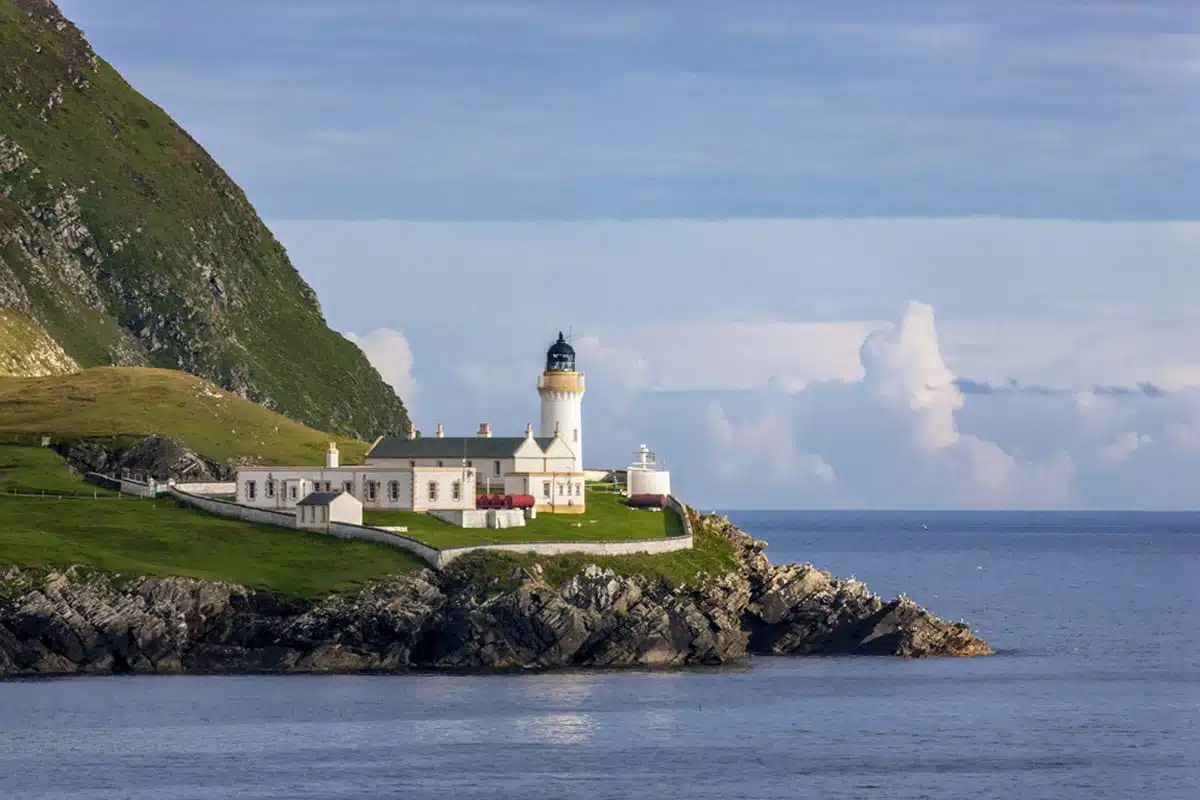
Given that your chances of viewing the lights increase as you travel farther north, it should be no surprise that the Shetland Islands offer one of your most incredible opportunities to view the kaleidoscopic phenomena.
Locals attest that you can see the auroras several times throughout the winter, with a mixture of low-level displays and one or two more stunning ones.
Outer Hebrides/Isle of Lewis and Harris
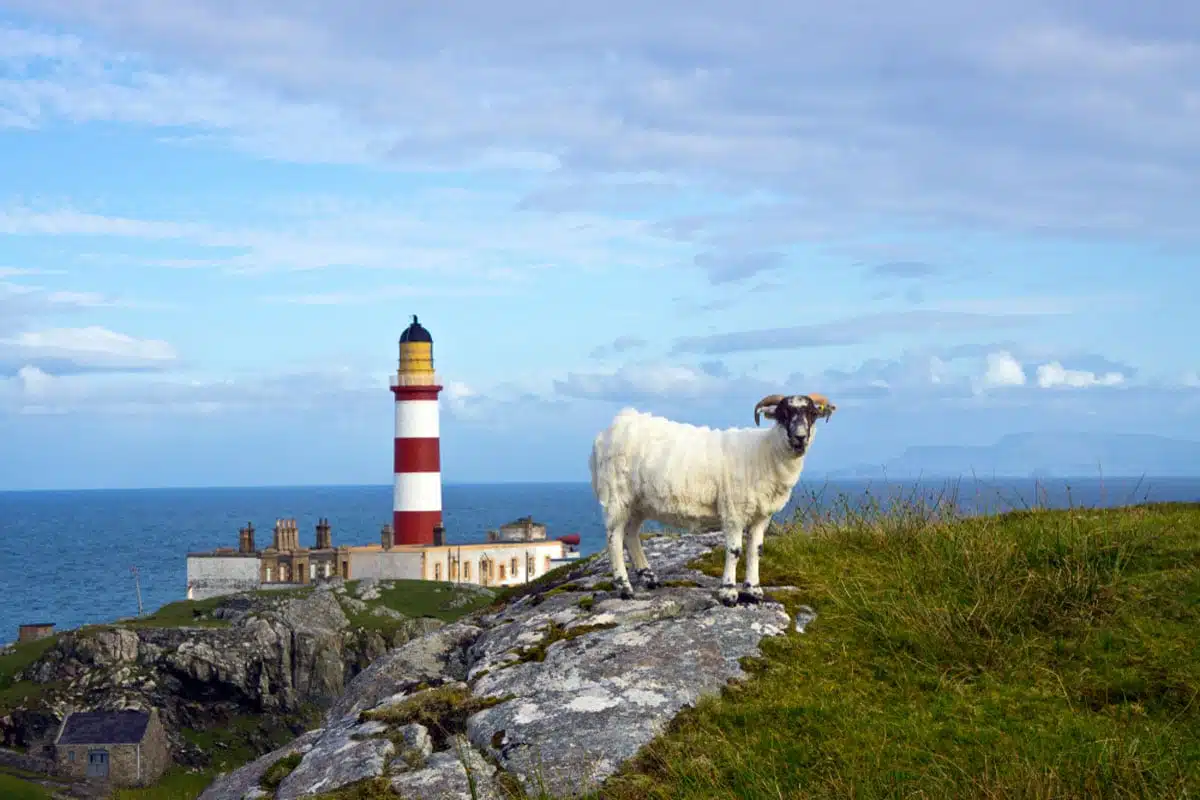
The Outer Hebrides are a different group of islands I recommend considering for observing the Northern Lights in Scotland. This Atlantic Ocean archipelago in the northwest boasts stunning, isolated islands far from light pollution.
Take advantage of a visit to the Isles of Lewis and Harris if you’re going to the Outer Hebrides. The sky is dark and there’s minimal light pollution in this area, making for ideal conditions for a potential glimpse of the Northern Lights.
There are many secluded beaches on the Isle of Harris, while Lewis’s flat, open countryside offers expansive, deserted vistas ideal for scenic views.
Orkney Islands
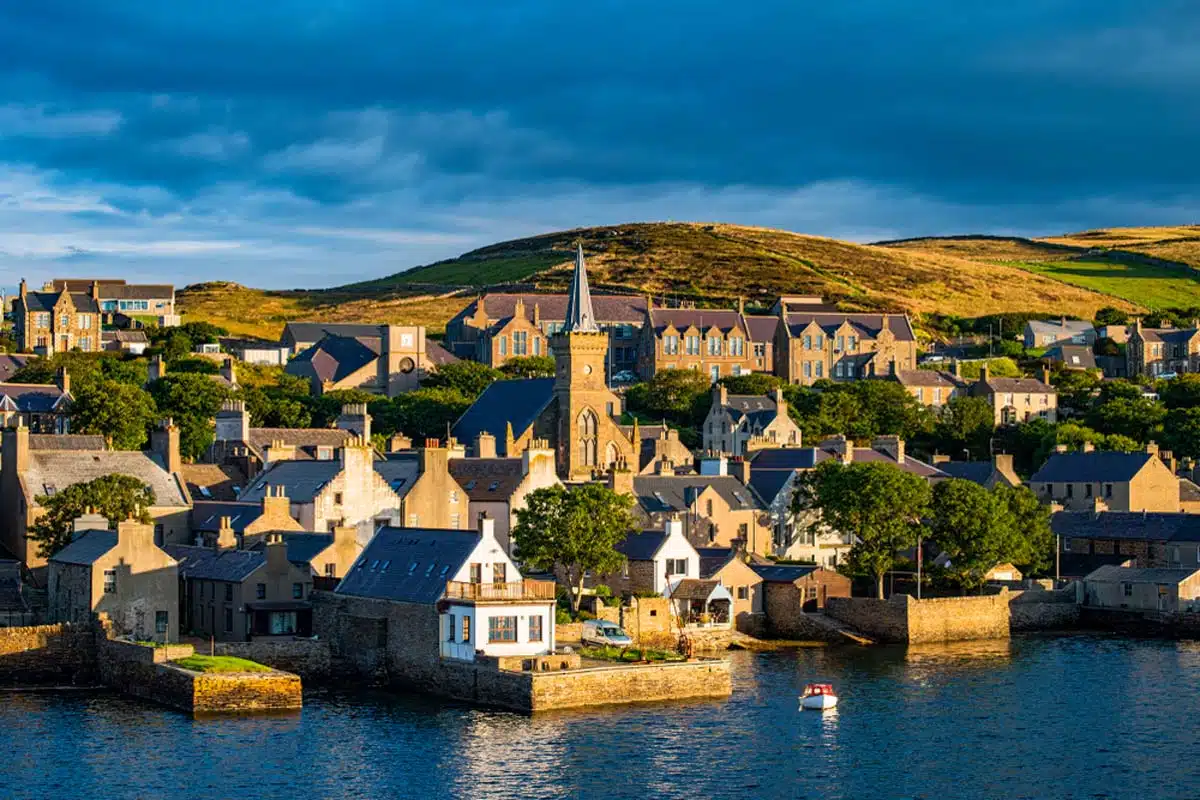
Yeah, yeah, you might be bored of all the islands by now, but they really are going to give you your best chance at spotting the phenomenon.
The Orkney Islands is a group of 70 islands that sit at a prime location for observing the Aurora Borealis in Scotland. The seashore at Birsay, the beach at Dingieshowe, and the summit of Wideford Hill are some of the most fantastic spots to observe the lights. Wrap up warm, it gets seriously cold here.
Isle of Skye
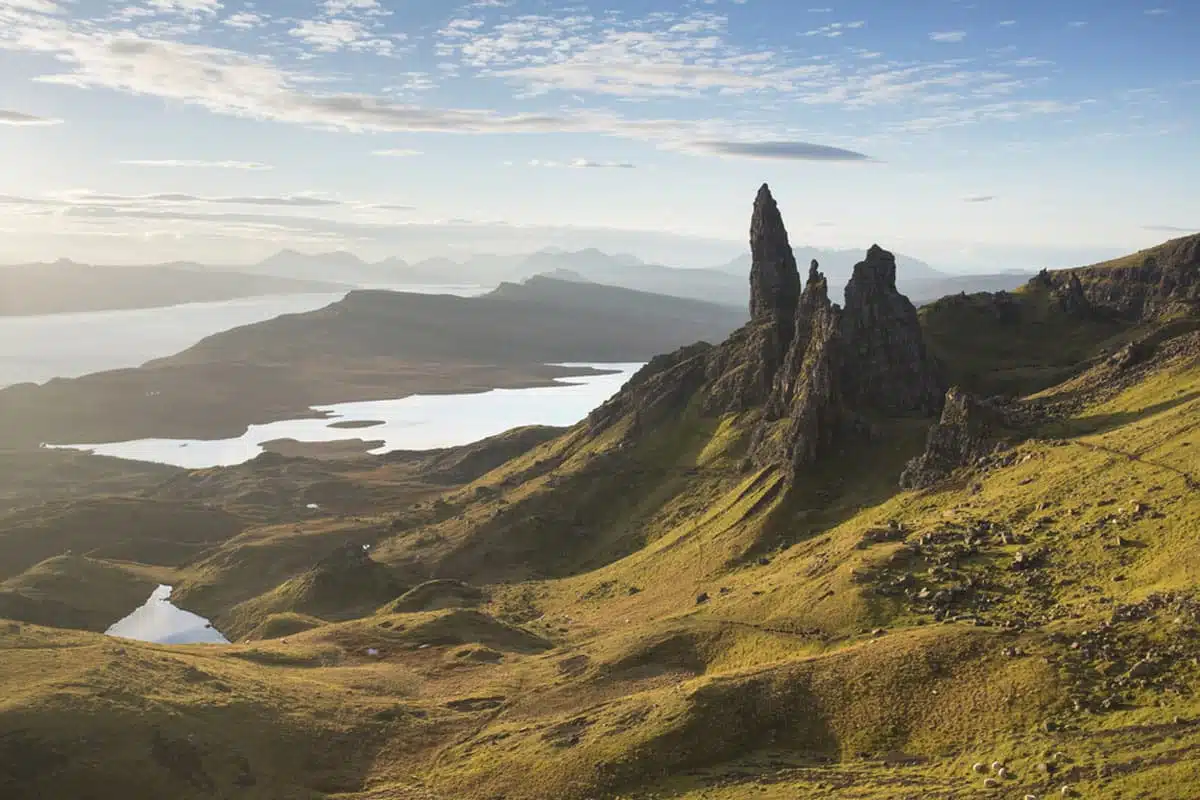
Skye is popular all year round in Scotland with locals and tourists, but travelling to Skye in the fall or winter means fewer crowds and better chances of catching the Northern Lights.
Though, some spots of Skye are better suited for viewing the Northern Lights than others because the island’s high mountains often obscure the sky regions — where they are most likely to be visible.
Rubha Hunish’s northernmost point offers a great chance of seeing the lights dance across the limitless ocean. Glendale, where you will also find the renowned Fairy Pools, is an excellent place where you can occasionally see the lights.
Edinburgh
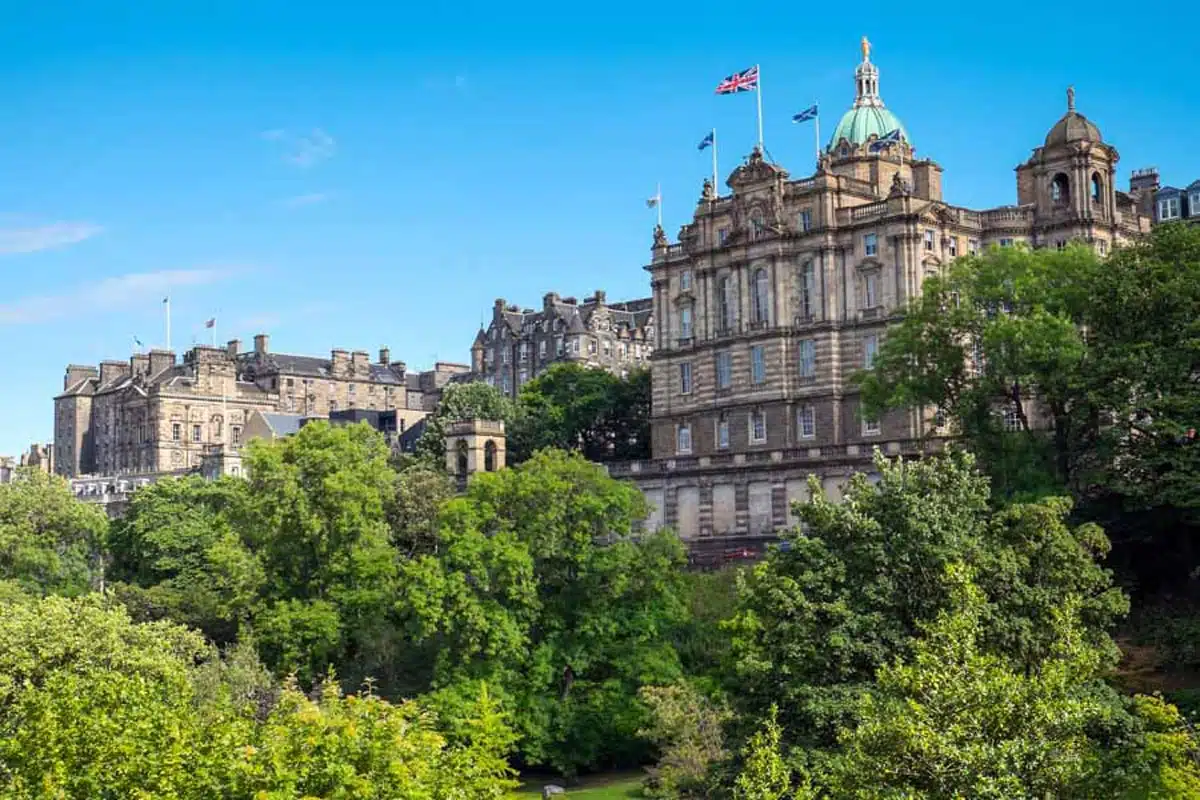
Before you get too excited, this is RARE. However, technically you can spot the Northern Lights in Edinburgh, the Scottish capital.
You’ll need an excellent vantage position to see the Northern Lights in Edinburgh. Take a stroll to a higher elevation, such as Calton Hill, for a breathtaking view of the metropolitan skyline.
Other incredible spots to see the lights are Blackford Hill and the fabled Arthur’s Seat, accessible via a winding, steep staircase – an excellent climb, either way.
Aberdeenshire and Moray Speyside
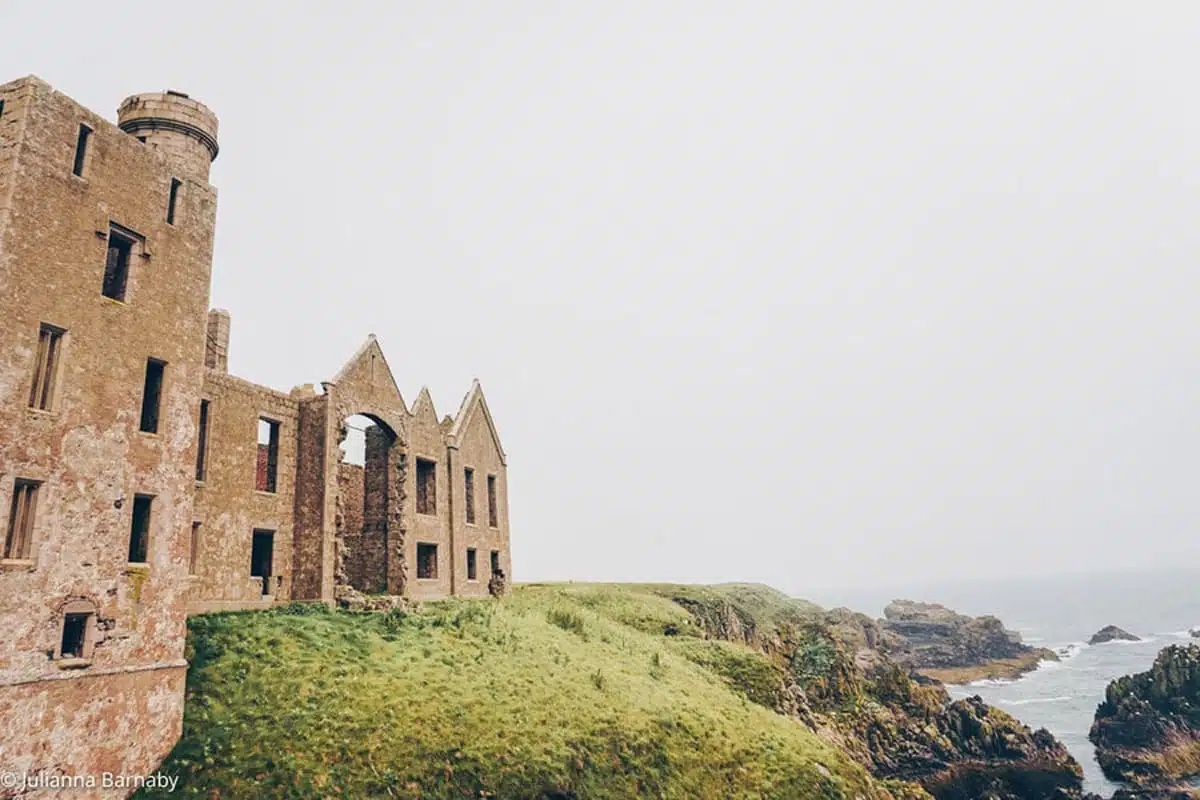
When the northern horizons have nature’s light show in the winter, it draws aurora seekers to the Moray Coast’s starry skies.
Both Nairn and Portknockie make excellent bases for the night, while the Moray Astronomy Club’s Sigma organisation occasionally hosts open aurora viewing events ideal for learning more about this unique phenomenon.
Since this region of Scotland experiences less rain than the west does, there may be a clear sky at night to view the Northern Lights.
Caithness
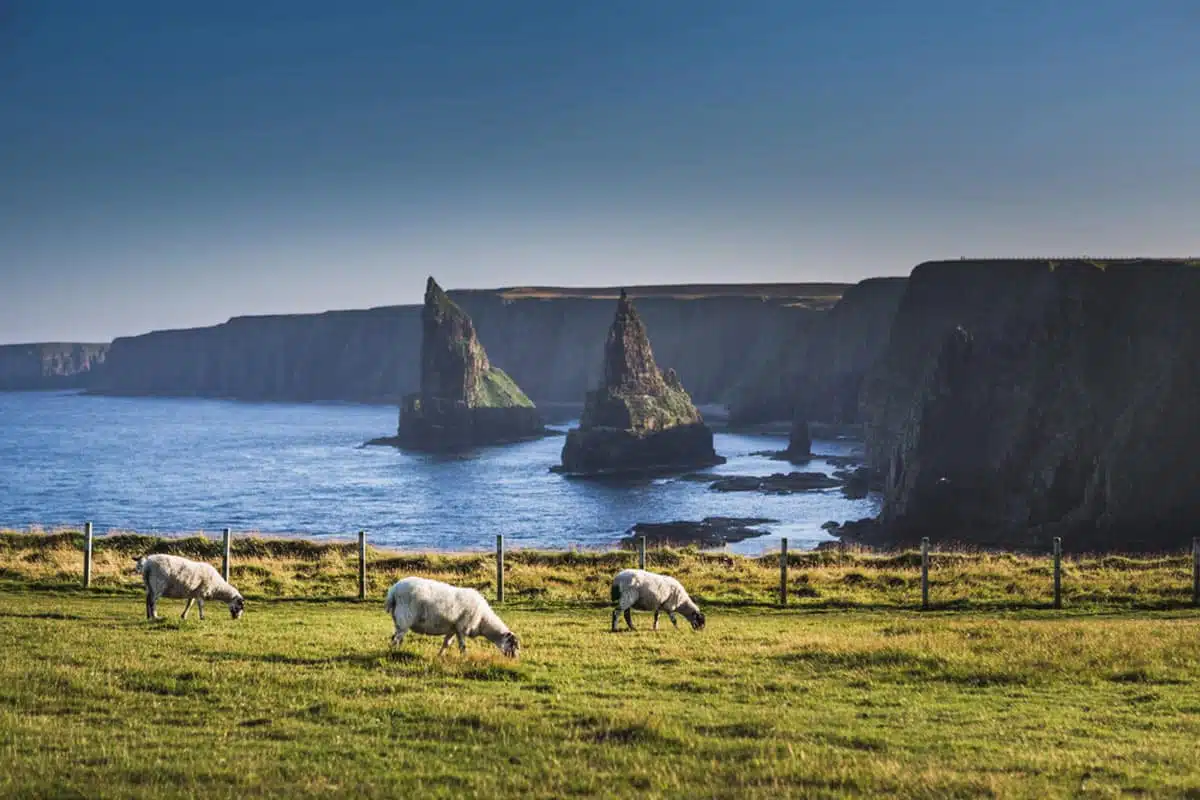
The historic Scottish county of Caithness, located at the northernmost edge of the mainland, has very low light pollution. And, if you haven’t learned by now, this makes it one of the best sites in Scotland to view the Northern Lights.
There are many locations to go aurora hunting in this region, including the charming lighthouse at Noss Head. Around Dunnet Head, Thurso Harbour, and Duncansby Head are other incredible locations to see the dancing lights.
The Cairngorms
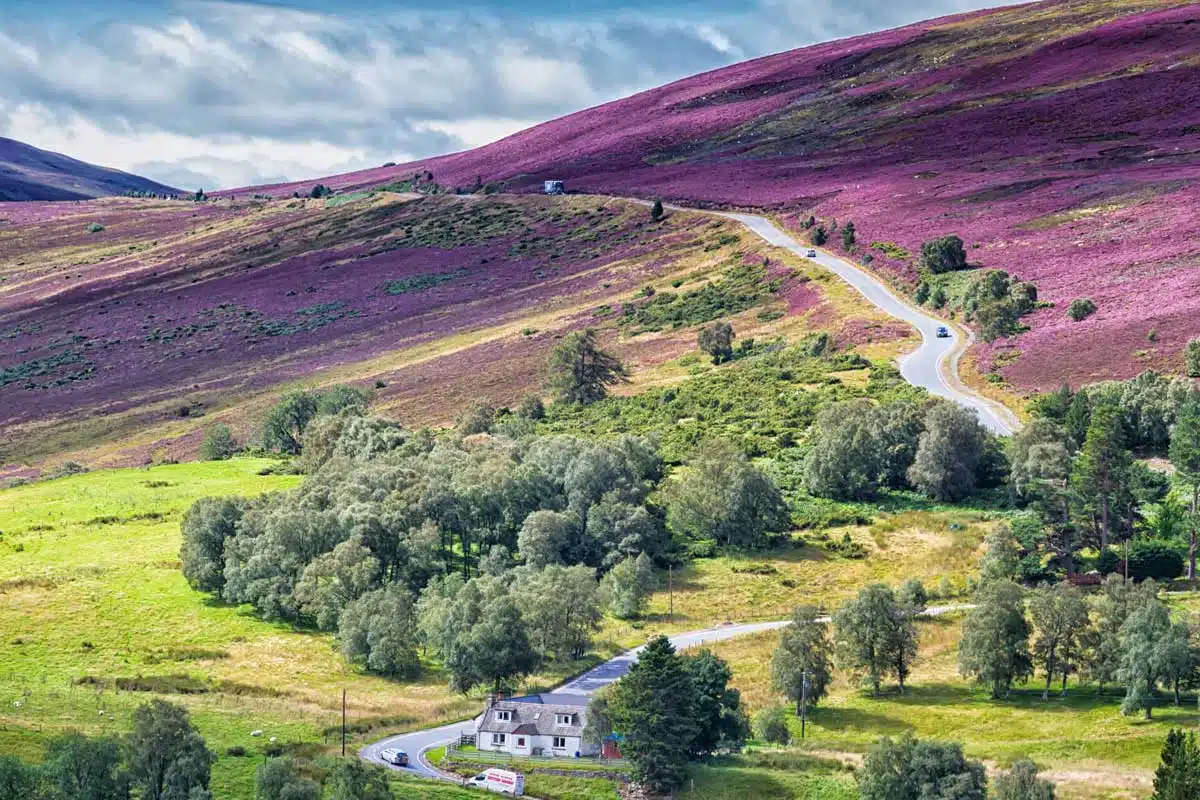
Alright, so The Cairngorms might not be the first place you think of for an aurora trip, but do not underestimate it.
The UK’s largest National Park might just be one of the best places to spot the Northern Lights – as long as you choose a location away from trees and the sharp inclines of the many mountains in the region, with as much of the sky visible as possible.
You can find the ideal viewing conditions in the national park; try looking north from the Cairngorm Mountain parking lot, or visit the Glenlivet Estate, which is well-known for its dark-sky events.
Psst… After you’ve spotted the lights, travel to Royal Deeside to see some castles.
Galloway Forest Park
Galloway Forest Park is the only Dark Sky Park in Scotland. It was the first park in the UK to gain this status in 2009 meaning it is free from any light pollution disrupting the view of the night sky.
In recent years, an increasing number of people have reported seeing the aurora borealis in Galloway Forest Park, despite its southerly location in Scotland compared to others in this list.
This stunning spot in south west Scotland was initially famous for its beaches and forests that contain endless miles of hiking and biking trails, while on a good day you can see across to Ireland. Potentially spotting the Northern Lights is a relatively new and additional bonus that makes this gorgeous spot even more attractive.
Isle of Mull
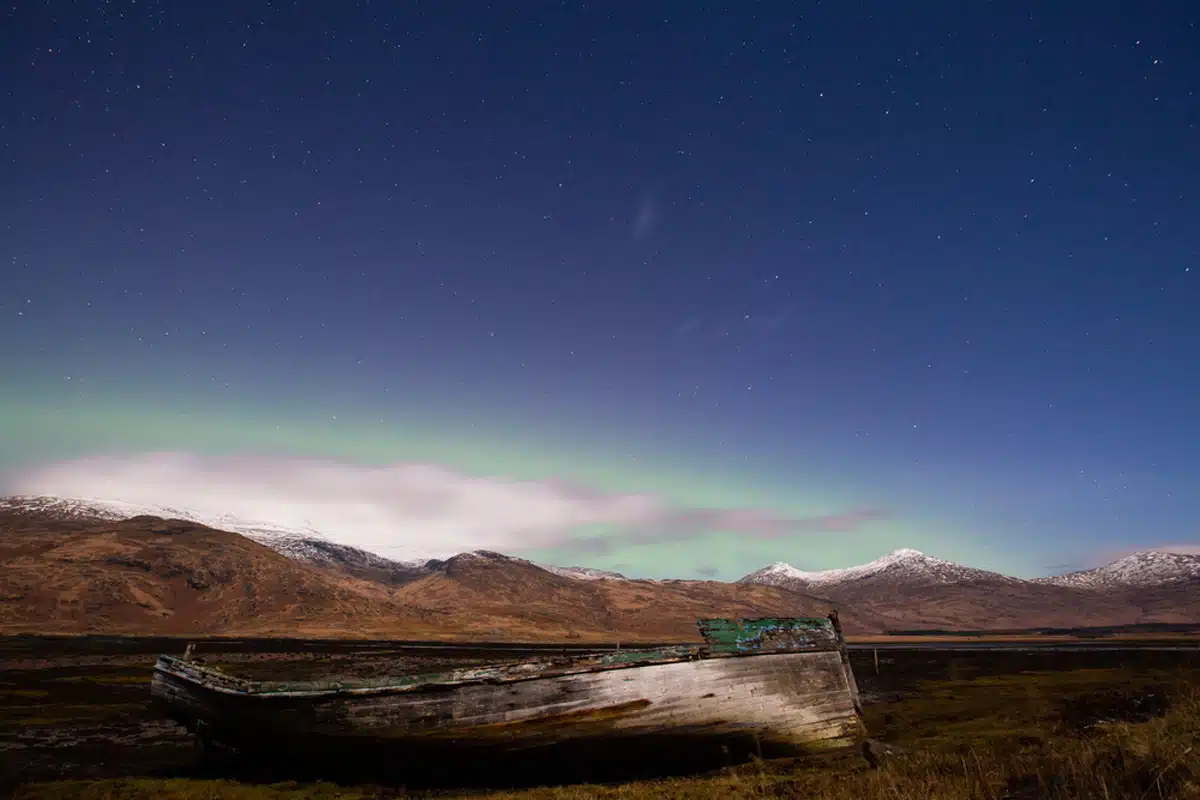
Located in the Inner Hebredies, the Isle of Mull is a wonderful spot to see the Northern Lights. Just off the west coast of Mainland Scotland, a short ferry ride away from Oban, this gorgeous island has the ideal conditions to spot the Northern Lights.
With a small population and little light pollution, the regular clear dark skies make it the perfect spot for star gazing, and with it, seeing the Nothern Lights. If you’re staying in the town of Mull, it pays to head out to the countryside to stay away from artificial lights.
Tobermory is one of the best spots, combining stunning views out to sea at Claiach Point with the clear skies sprawling out ahead of you just waiting for the spectacular light show to begin.
Torridon
Meanwhile, on mainland Scotland, Torridon is another awesome spot to capture the Northern Lights in all their splendour. Home to an incredible landscape mixing snow-capped mountains, rolling green hills, and rugged coastline, Torridon is an oasis of beauty in its own right.
Yet, its lack of light pollution means that Torridon has some of Scotland’s clearest skies, while its remote location makes it really easy to spot the dancing colours of the Northern Lights across the sky.
This is a great spot for you to capture the Northern Lights on photos at their absolute best, particularly if you can get them reflecting off one of the crystal lakes.
Kildonan Mountains
The Kildonan Mountains is one of mainland Scotland’s most northerly spots and is surrounded by beautiful landscapes complete with undulating green hills, and rocky coastlines that the unrelenting Atlantic Ocean continuously batters.
The mountains are also one of the best spots to see the Northern lights across the ocean, with snow-capped peaks and hillocks very much in view.
With the mountains very much isolated from any surrounding towns or villages, light pollution is non-existent, while the spectacular landscapes add an absolutely breathtaking backdrop to the stunning colour formations of one of nature’s most glorious treasures.
Best Time of Year to See the Northern Lights in Scotland?
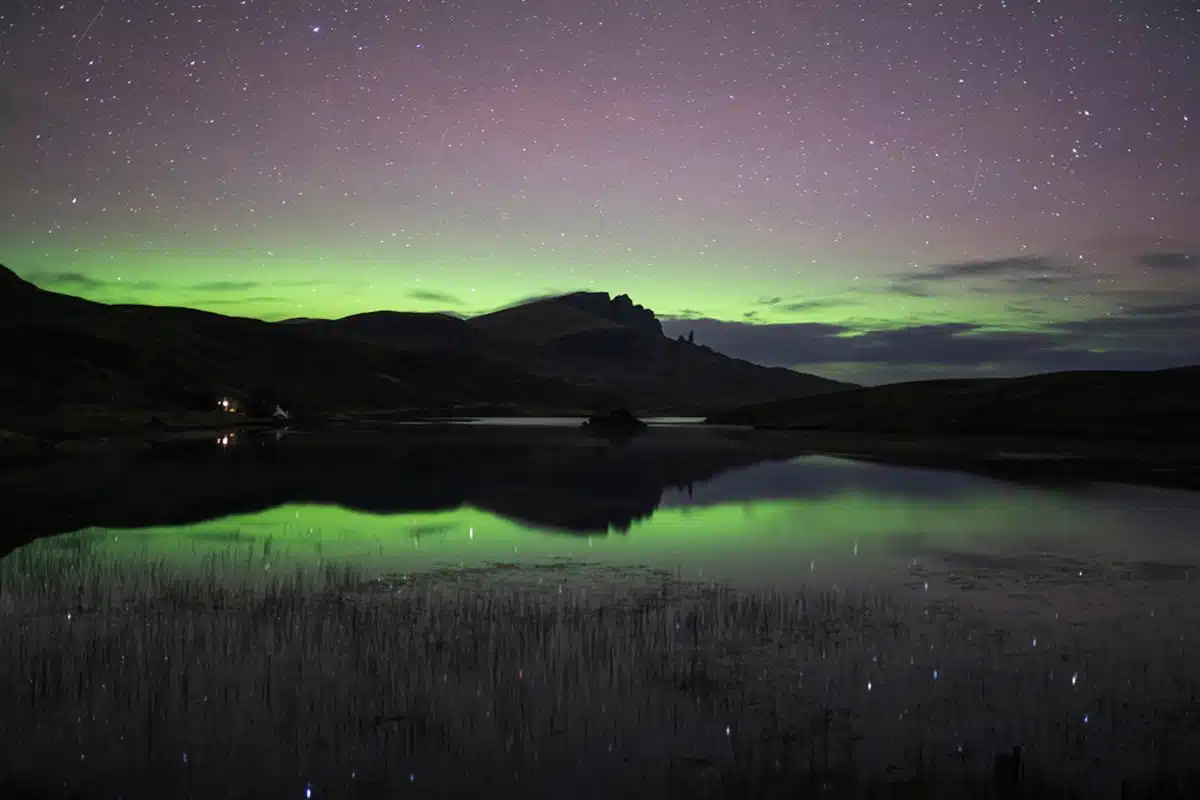
December through February is the best time to see the lights in Scotland as they are the darkest months. You need more than just a pitch-black night, though – only under conditions of active solar activity will you be able to observe the Northern Lights.
If you want a more solid chance to glimpse the Northern Lights in all the glory, I recommend a trip to the Arctic Circle in Scandinavia. Spotting the Aurora Borealis in Iceland or Norway is a treat.
Practical Tips
- Keep an eye on the weather forecast, as you will need a clear night sky to see the aurora. Use this UK tracker to check.
- I don’t want to sound like your nagging Grandma, but seriously, wrap up warm. It can be cold at night, even in the summer. Also, pack snacks and drinks, as you may be there for a while.
- This one isn’t crucial unless you’re looking to flex on the ‘Gram – make sure you have a good camera with a tripod to capture the lights.
- Be patient. It may take a while to track down the lights, but once you see them, it’ll all be worth it.
- And lastly, enjoy! If you are lucky enough to see the lights in Scotland, be sure to soak in the full experience.
Love This? Save and Share on Pinterest
